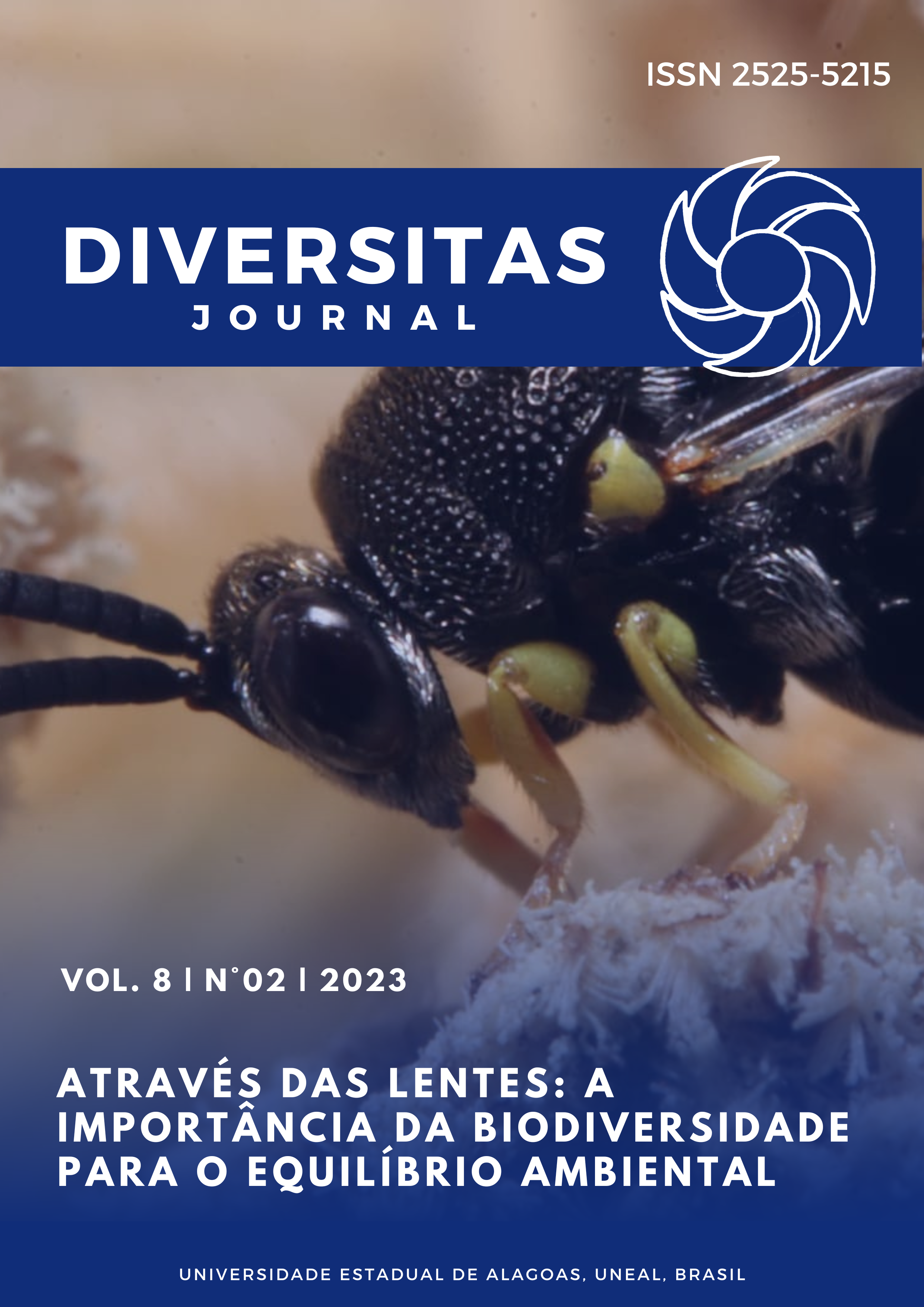Herbicide selectivity on teak seedlings (Tectona grandis L.f).
DOI:
https://doi.org/10.48017/dj.v8i2.2079Keywords:
Behavior, management, sustainability, interactionAbstract
One of the factors that interfere in the productivity of a forest culture, the knowledge of the selectivity of the product to the culture is essential to eliminate or limit the injuries caused by the product to the species of interest. The experiment was installed at the IFAL campus Maceió, in Maceió, Alagoas, with the objective of evaluating the selectivity of saflufenacil and glyphosate in teak seedlings from seeds, through morphological, physiological and visual analysis. With Entirely Random Blocks (DBC) with five repetitions; the treatments were: Saflufenacil (100 gha-1 of active ingredient), Glyphosate (1000 gha-1 ia), association of Saflufenacil and Glyphosate (100 gha-1 ia + 1000 gha-1 ia) and the control (the control without application of herbicides). The results obtained in the variables allow us to conclude that there is selectivity between the treatments observed in the evaluation period.
Metrics
References
Agostinetto, D., Tarouco, C. P., Markus, C., Oliveira, E. de., Silva, J. M. B. V. da., Tironi, S. P. (2010). Seletividade de genótipos de eucaliptéos a doses herbicidas. Semina Ciências Agrarias, 31(3), p. 585-598. https://www.redalyc.org/articulo.oa?id=445744097007
Azania, C. A. M., Azania, A. A. P. M. (2014). Avaliação de Fitoxicidade em plantas daninhas. In: P. A. Monquero. Aspectos de Biologia e Manejo de Plantas Daninhas. (pp.422). Rima.
Angeli, A., Stape, L. (s.d). Tectona grandis. https://www.ifpe.br/identificacao/tectonagrandis.asp.
Delgado, L. G. M., Gomes, J. E., Araaujo, H. B. (2008). Análise do sistema de produção de teca (Tectona grandis L.f.) no Brasil. Ver. Cient. Elet. Eng. Florestal, (11), p. 1-6.
Gonçalves, C. G., Silva Junior, A. C., Pereira, M. R. R., Marchi, S. P., Martins, D. (2016). Seletividade do suflafenacil isolado e em associação com glyphosate em culturas de café e citrus. Revista Caatinga, 29(1), p. 45-55. https://periodicos.ufersa.edu.br/caatinga/article/view/4652
Harker, K. N., O’Donovan, J. T. (2013). Recent weed control, weed management, and integrated weed management. Weed Techonology, 27(1), p. 1-11. https://doi.org/10.1614/WT-D-12-00109.1
Mello, A. J. P. (2020). Fitorremediaçãoo em solos contaminados com herbicidas. Appiris.
Pereira, M. R. R., Martins, D., Rodrigues, A. C. P., Souza, G. S. F., Cardoso, L. A. (2011). Selectivity of suflafenacil to Eucolyptus magrandes. Planta Daninha, 29(3), p. 617-624. https://doi.org/10.1590/S0100-83582011000300016
Taiz, L., Zeiger, E., Moller, I. M., Murphy, A. (2017). Fisiologia Vegetal. (6ª edição). Artmed.
Reis, F. C., Mendes, K. F., Bacchin, L., Takeshita, V., Tornisielo, V. L., Vitoria Filho, R. (2021). Seletividade, Hormesis e Fisiologia dos herbicidas nas plantas. In: A. A. M. Barroso, A. T. Murato. Matologia: Estudo sobre plantas daninhas. (p. 547). Fabrica da Palavra.
Schumacher, M. V., Dick, G., Vieira, M., Ludvichak, A. A. (2017). Silvicultura Aplicada. UFSM.
Silva, K. S. (n.d). Quem é o saflufenacil no manejo de plantas daninhas?. https://www.weedout.com.br/saflufenacil.
Tiburcio, R. A. S., Ferreira, F. A., Paes, F. A. S., Melo, C. A. A., Medeiros, M. N. (2012). Crescimento de mudas de clones de eucalipto submetidos à deriva simulado de diferentes herbicidas. Planta Daninha, 36(1), p. 65-73. https://www.scielo.br/j/rarv/a/zqMTWKF9JtvD7rSwGXCRVRv/?lang=pt
Downloads
Published
How to Cite
Issue
Section
License
Copyright (c) 2023 Antônio José Plácido de Mello Mello

This work is licensed under a Creative Commons Attribution 4.0 International License.
The Diversitas Journal expresses that the articles are the sole responsibility of the Authors, who are familiar with Brazilian and international legislation.
Articles are peer-reviewed and care should be taken to warn of the possible incidence of plagiarism. However, plagiarism is an indisputable action by the authors.
The violation of copyright is a crime, provided for in article 184 of the Brazilian Penal Code: “Art. 184 Violating copyright and related rights: Penalty - detention, from 3 (three) months to 1 (one) year, or fine. § 1 If the violation consists of total or partial reproduction, for the purpose of direct or indirect profit, by any means or process, of intellectual work, interpretation, performance or phonogram, without the express authorization of the author, the performer, the producer , as the case may be, or whoever represents them: Penalty - imprisonment, from 2 (two) to 4 (four) years, and a fine. ”


















